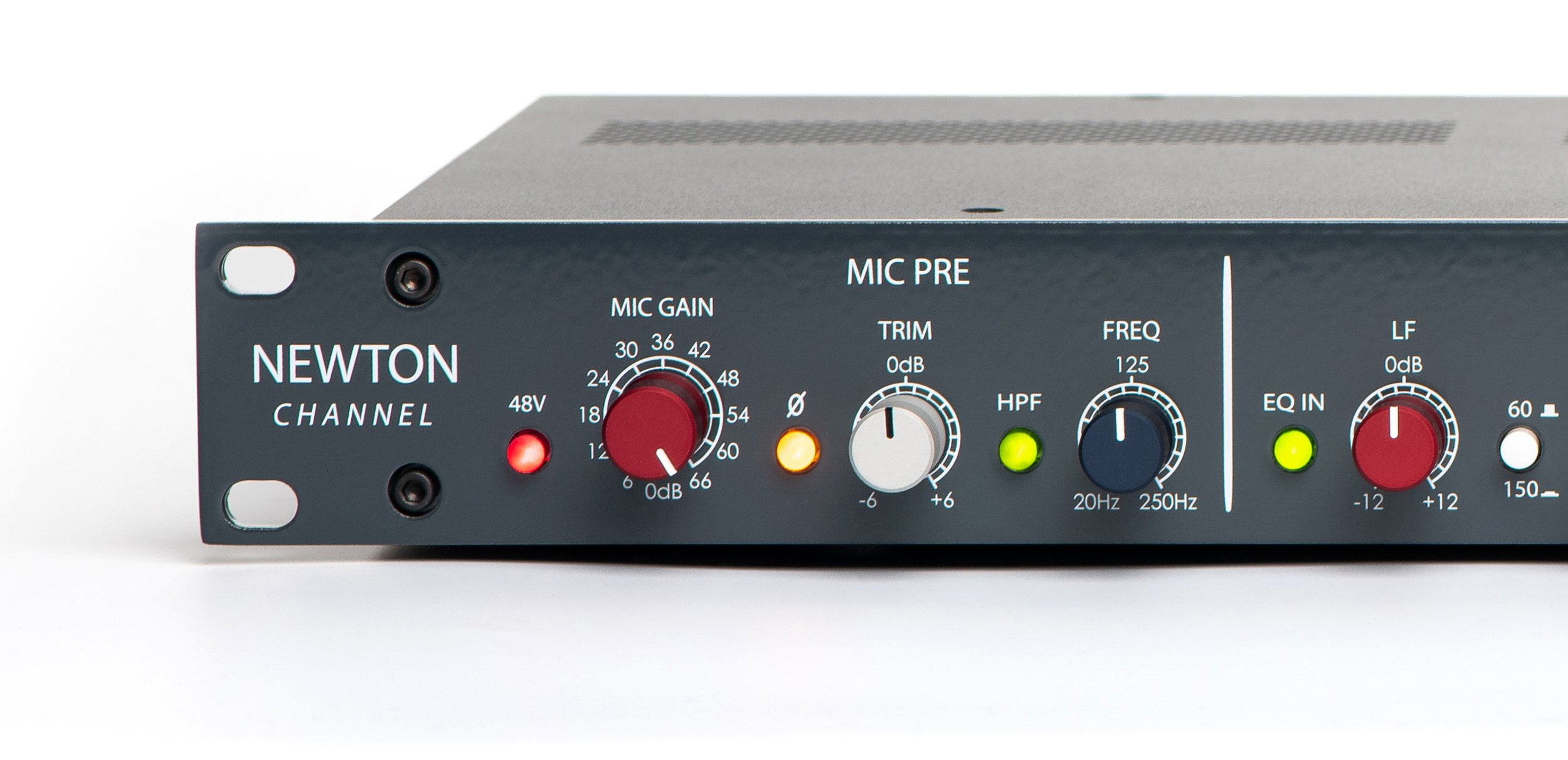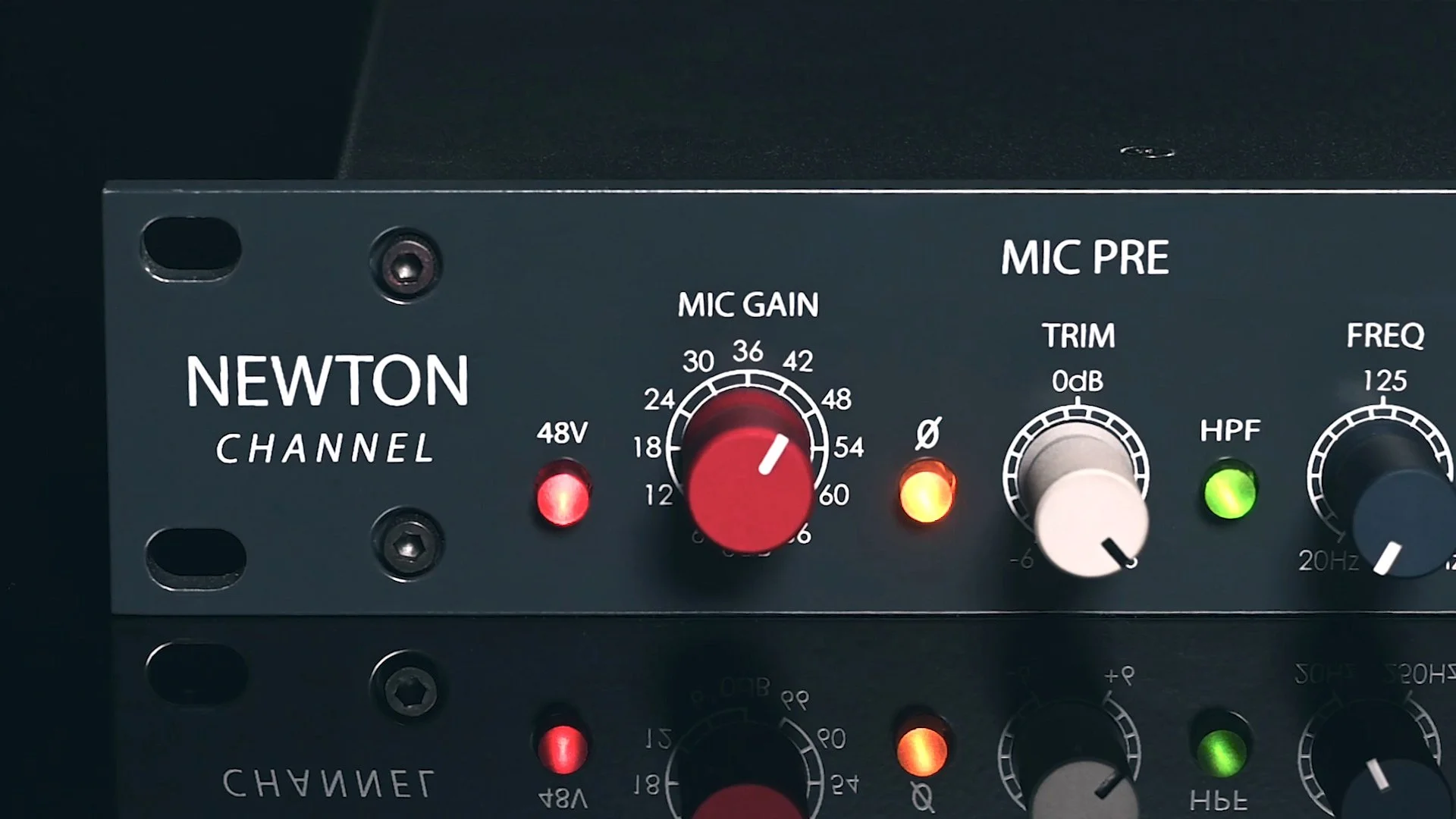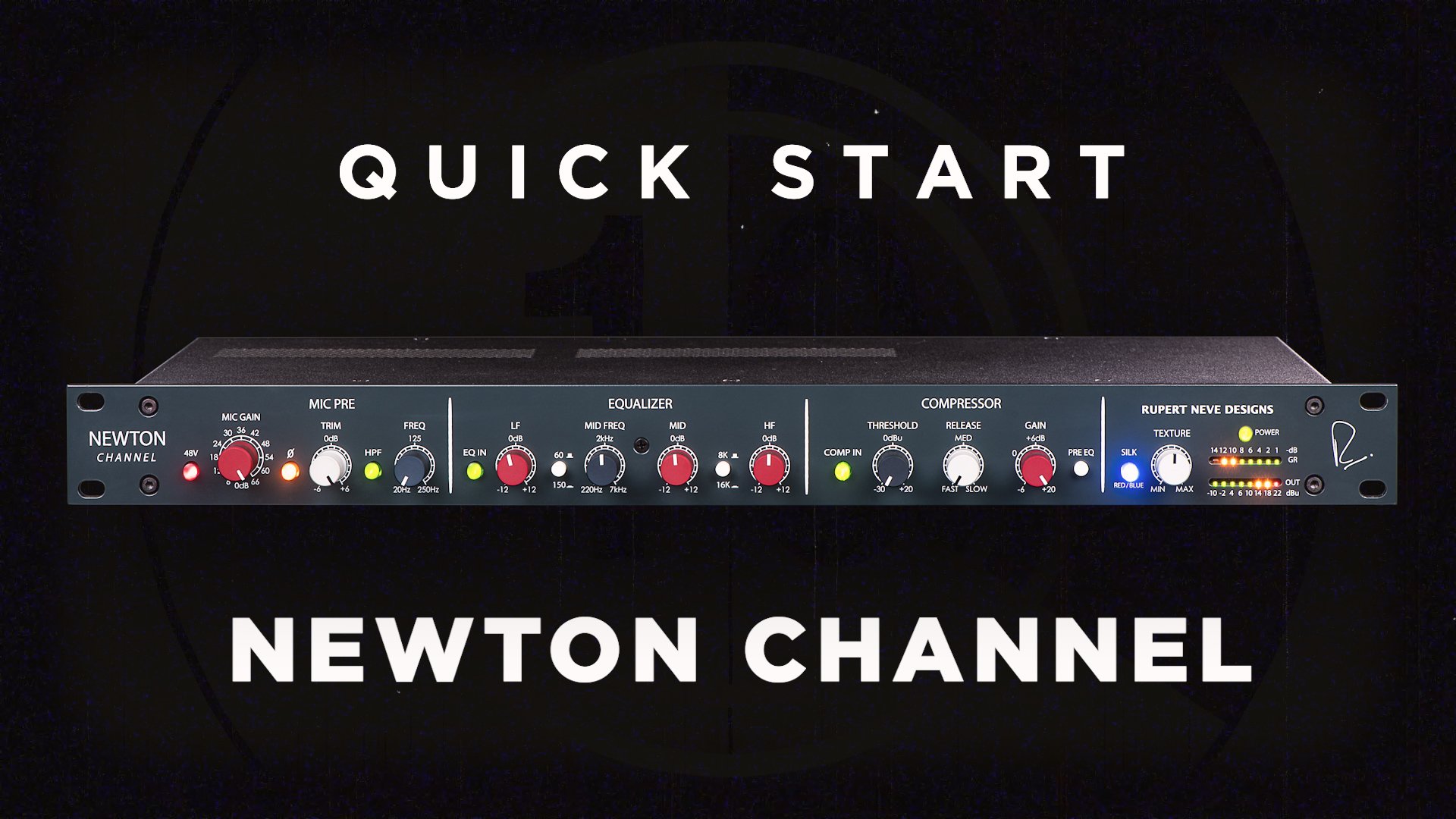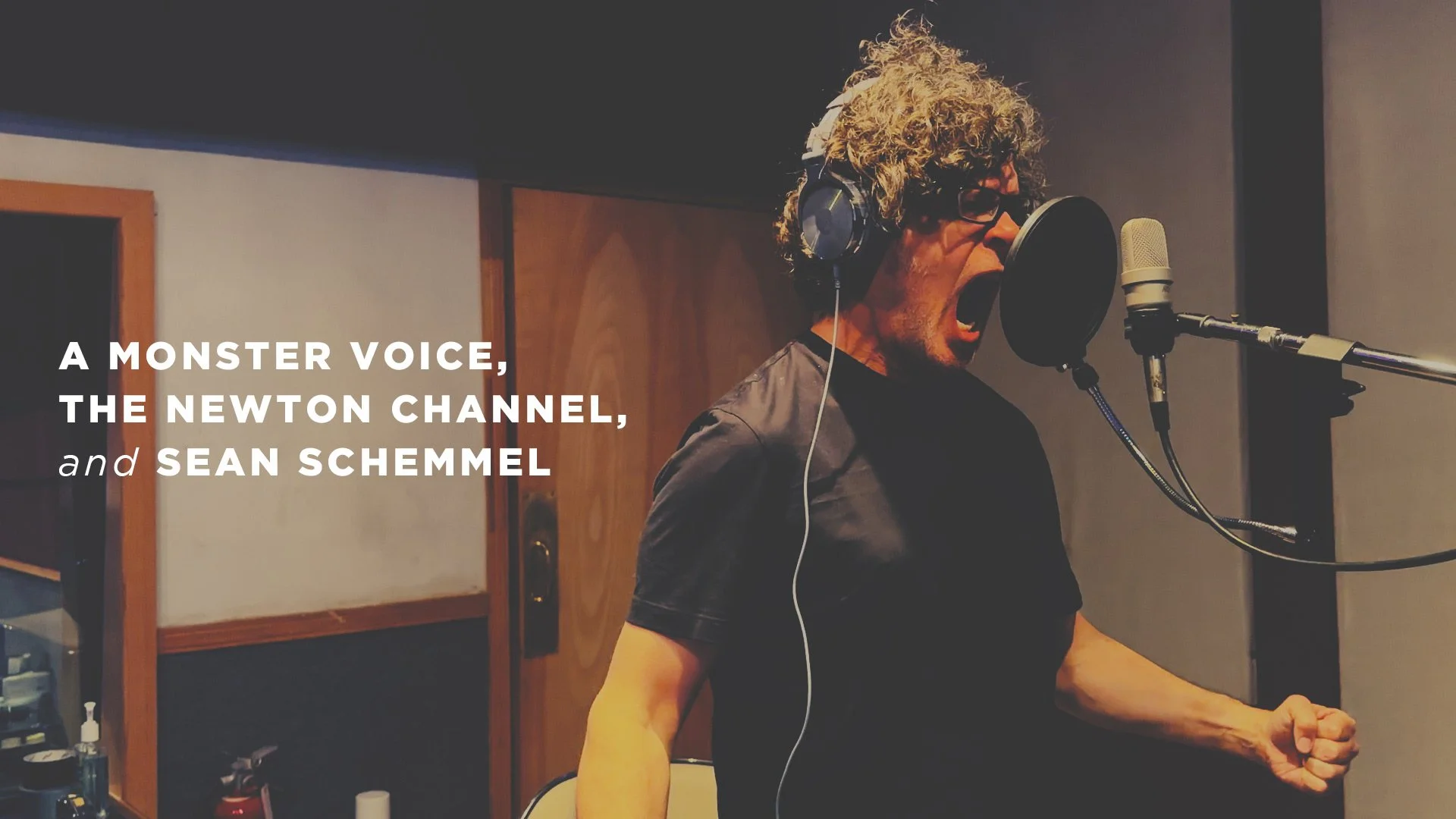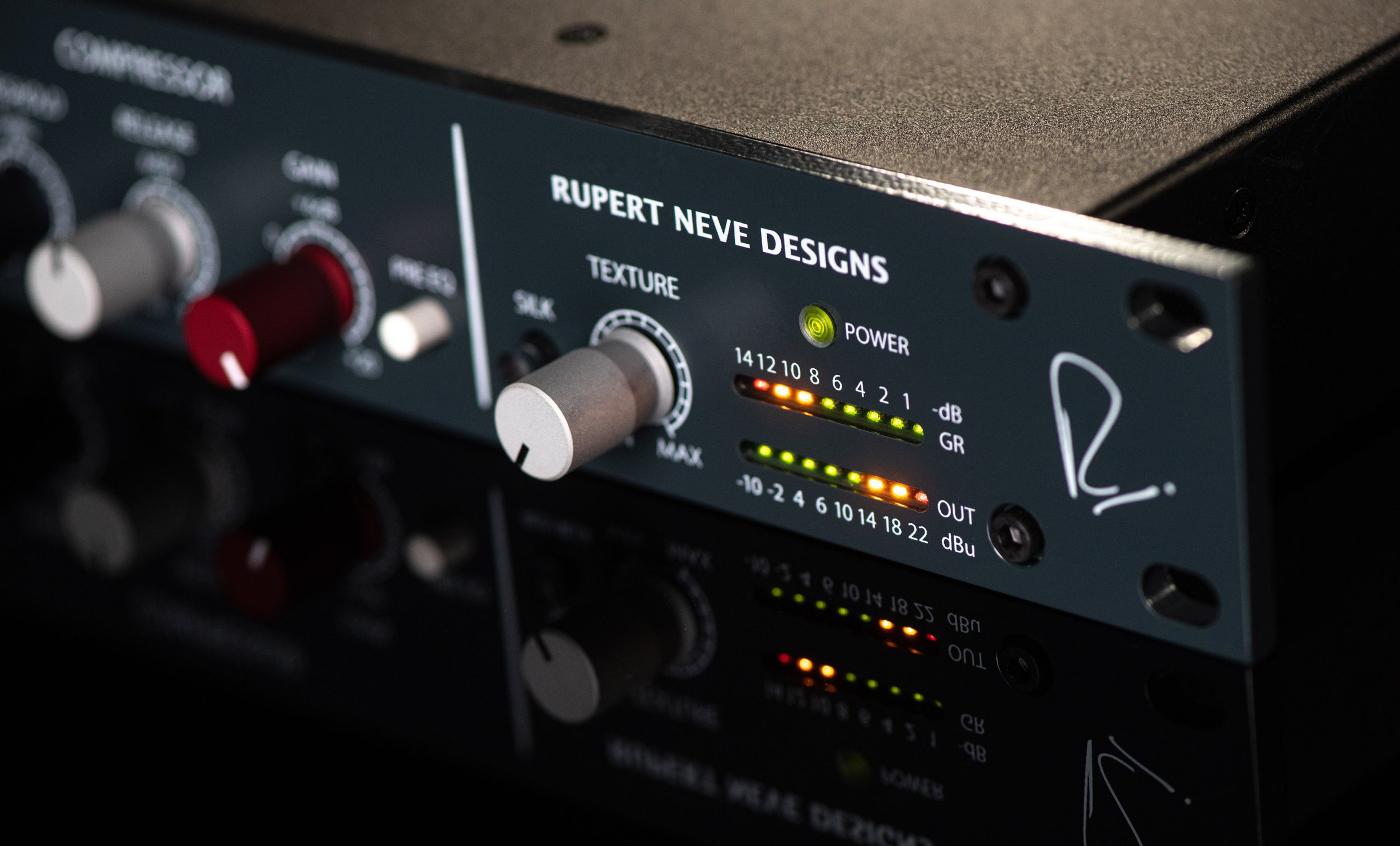
NEWTON CHANNEL
Mic Pre + EQ + Compressor with Silk
OVERVIEW / MEDIA / FEATURES / REVIEWS / SPECS & RESOURCESA powerful modern channel strip with an instantly recognizable sound.
The Newton Channel is a powerful modern channel strip born from a legendary sonic lineage. Its intuitive design provides classic sound on demand, with all the instantly-recognizable character, musical tone-shaping abilities, and proven reliability that define a Rupert Neve Designs product. The Newton is equally well-suited for a project studio, large-scale commercial facility or live sound rig – giving more engineers, producers, and artists a chance to join the RND family than ever before.
“This is my new go-to. Everything I need, nothing I don’t.”
The name originates with Rupert’s birthplace – Newton Abbot, England – and reflects the sonic journeys of his life: from Newton Abbot to Wimberley, vintage to modern, and everything in between. This is a truly versatile, world-class channel strip capable of bringing any source to life with the classic sound of Rupert Neve Designs.
The Input Stage and Mic Preamp
The Newton’s microphone preamplifier contains all the tone and musicality expected from a Rupert Neve Designs piece. This preamp makes it incredibly easy to quickly dial in a tight, clean and detailed sound; and with a robust 72dB of gain including 6dB of fine trim control, the Newton is ideally suited for a wide variety of sources.
While the input stage is tailored to be an ideal match for standard microphone source impedance, it is equally happy being driven by line levels – so a pair of Newtons can also be put to use as a high-end mixing tool for any studio. The Newton also includes our distinctive variable high-pass filter with a comprehensive frequency range adjustment and independent bypass switch, allowing the engineer to quickly eliminate unwanted noise, rumble or other low frequency build-up in the source signal.
The Equalizer
The EQ section in the Newton is optimized for speed & flexibility with a simplified set of controls. The low and high frequency shelf bands are controllable with accurate 31-detent potentiometers that provide up to 12dB of gain boost/cut, providing the ability to dial in either subtle or extreme settings as desired.
The parametric mid-band of the Newton EQ section includes another 31-detent potentiometer and a wide range of mid frequencies to boost or cut, switchable from 220Hz to 7kHz. This makes the MF band particularly flexible, allowing for taming low-mid muddiness, boosting mid frequency presence, or removing any harshness in the upper midrange. The carefully-chosen fixed Q setting maintains a healthy balance of musicality and precision – just wide enough for brush-stroke equalization without adversely affecting neighboring frequencies.
As with every section of the Newton Channel, the EQ has an independent bypass button for double- checking settings every step of the way.

"The Newton is a tribute to the past and a wink to the future."
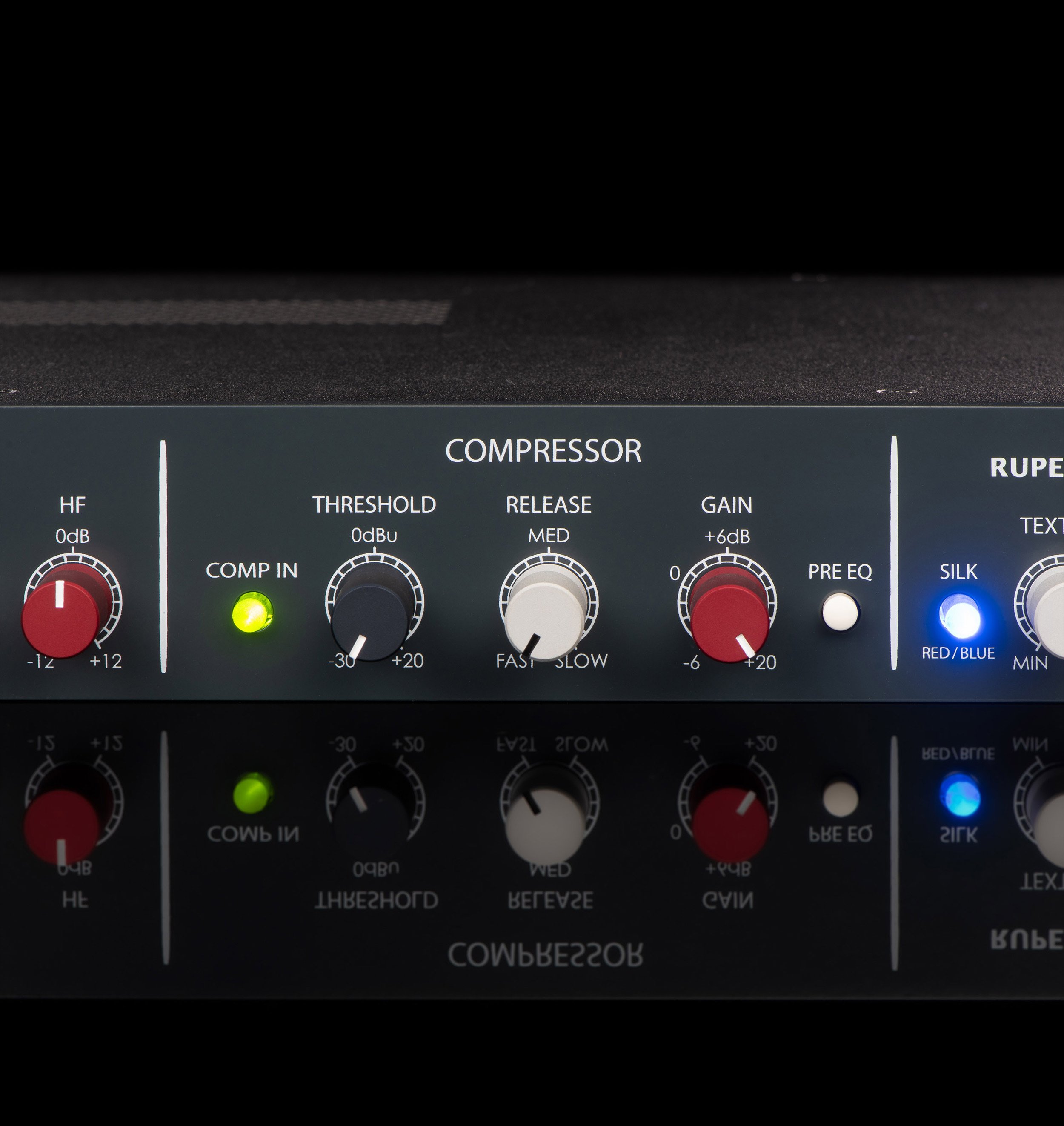
The Compressor
The Newton Channel also contains the latest iteration of Rupert Neve Designs’ ultra-smooth VCA compressor, with +20dB of make-up gain and ample control for any amount of needed compression while maintaining an effortless sound.
Also included is a helpful ‘pre EQ/post EQ’ push button to place the compressor either before or after the EQ section, plus an independent bypass button.

WHAT IS
Silk?
At the end of the Newton’s signal path is the unique & highly coveted variable Silk circuit, providing the power & control to amplify 2nd and 3rd order harmonics by saturating our custom Rupert Neve Designs output transformers for a vintage tonality. From a subtle transformer tonality without Silk, to significantly more color than vintage modules with the Silk / Texture circuit fully pushed, the Newton’s output stage can fill out tracks with enhanced power and sparkle.

When you apply SILK RED, you’re enhancing harmonic content generated by the highs and high mids of your source. This adds a sparkly sheen to the top end, and is often ideal for sources including vocals, snare, strings, pianos, and other acoustic instruments.

With SILK BLUE, you’re enhancing harmonics generated by the lows and low mids of your source. This tends to “beef up” a signal from the bottom up, making it a great choice for drums, bass guitars, heavy electric guitars, male vocals, and synthesizers.
"There will always be a Newton or 4 in my FOH rack going forward."

Custom Transformer Outputs
The Newton Channel has a custom transformer output stage with a balanced MAIN standard line level output. Additionally, a separate -6dBu XLR output can compensate for high levels of input and Silk harmonic saturation, enabling engineers to fully drive the Newton to achieve more transformer harmonics without clipping the next device in the chain. Both outputs are active and can be used concurrently.
VIDEO

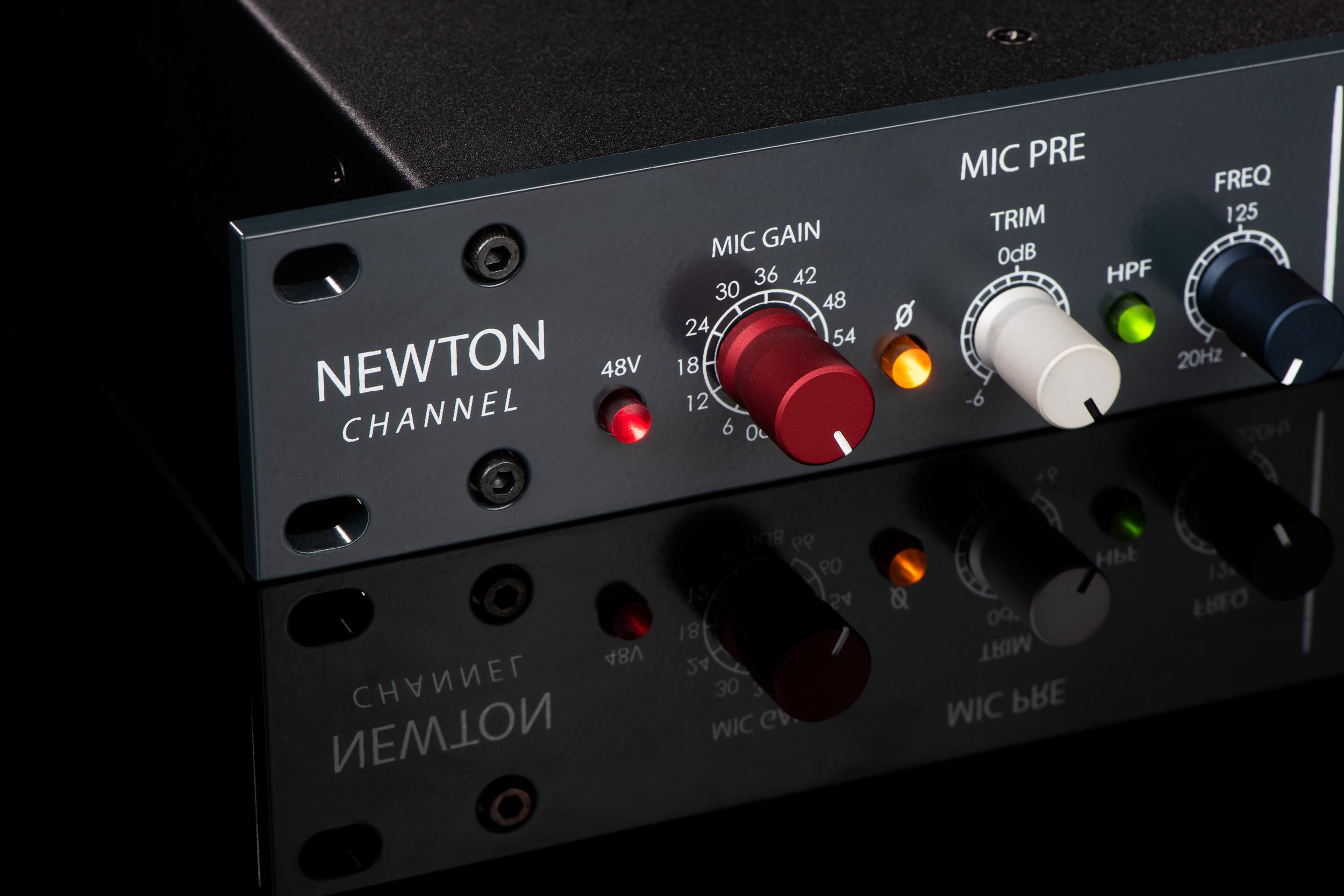
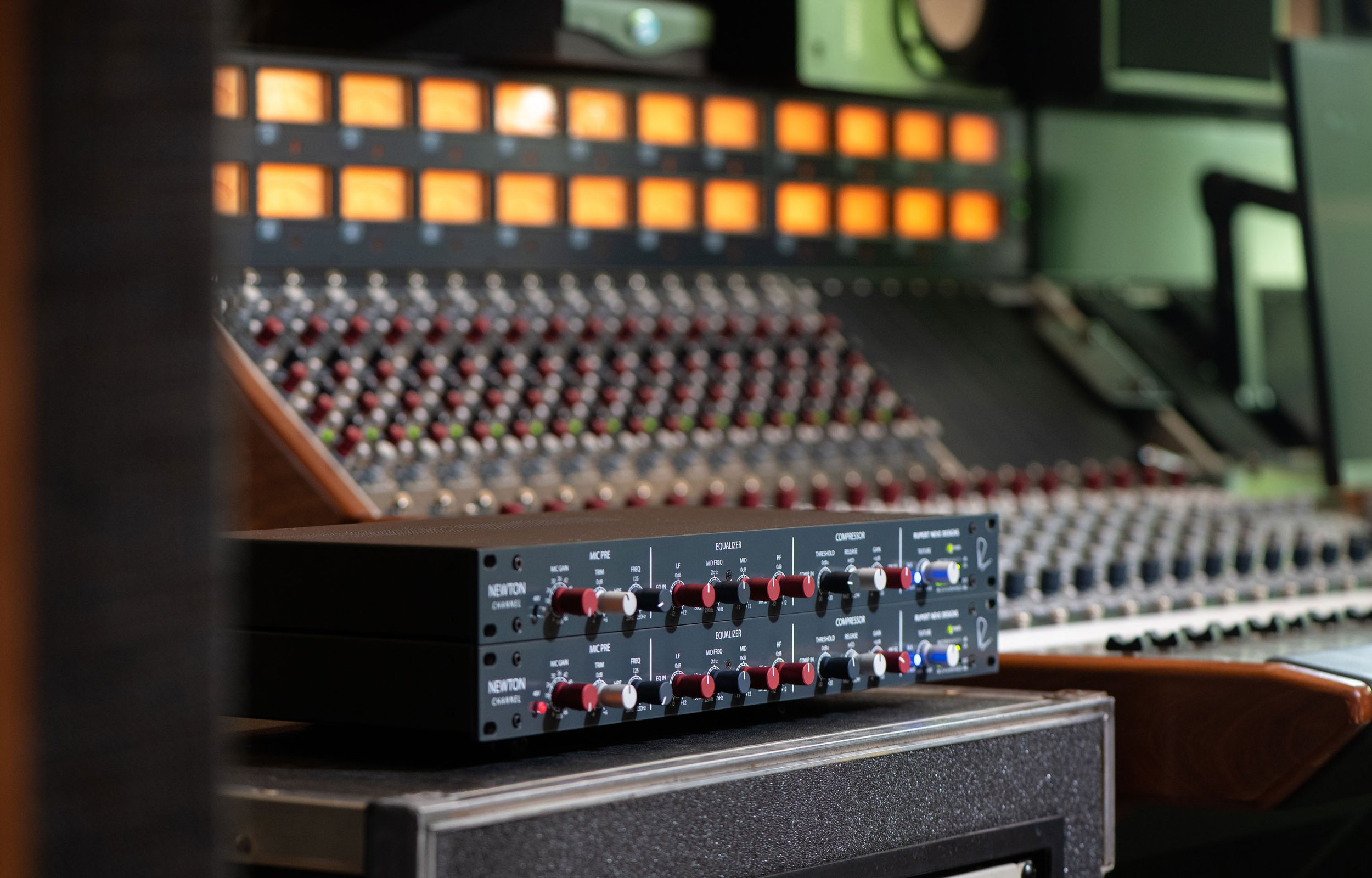




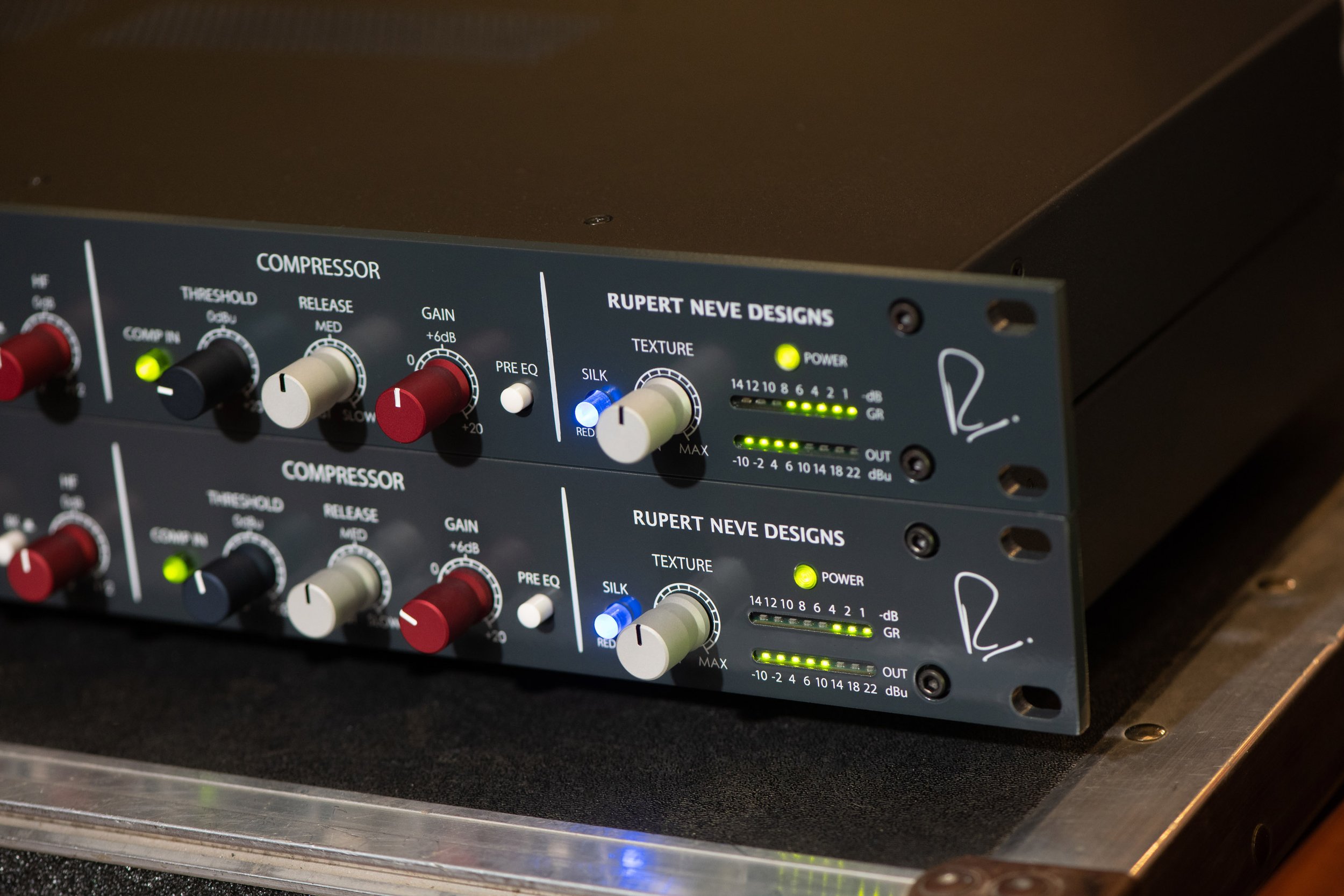
FRONT PANEL FEATURES
Mic Gain
12-position rotary switch that controls the microphone preamp gain in 6dB steps. For line level input signals, set the Mic Gain to the “0dB” position.
48V
Push-button switch that illuminates RED when +48V Phantom Power is engaged.
Ø (Polarity)
Push-button switch that illuminates AMBER when engaged and inverts the phase of the preamp signal.
TRIM
31-detent potentiometer that allows the user to adjust the preamp gain within a range of +/- 6dB.
HPF
Push-button switch that illuminates GREEN when the high pass filter is engaged.
FREQ
31-detent potentiometer that allows the user to adjust the cutoff frequency of the Sallen-Key high pass filter within a range of 20Hz to 250Hz.
EQ IN
Push-button switch that illuminates GREEN when the EQ section is engaged.
LF
31-detent potentiometer that controls the amount of boost or cut for the low frequency shelf within a range of +/- 12dB.
60/150
Push-button switch that selects between the two available low frequency shelf frequencies: 60Hz (OUT) and 150Hz (IN).
MID FREQ
31-detent potentiometer that controls the frequency of the midband peaking EQ within a range of 220Hz to 7kHz.
MID
31-detent potentiometer that controls the amount of boost or cut for the MID FREQ peaking EQ within a range of +/- 12dB.
8K/16K
Push-button switch that selects between the two available high frequency shelf frequencies: 8kHz (OUT) and 16kHz (IN).
HF
31-detent potentiometer that controls the amount of boost or cut for the high frequency shelf within a range of +/- 12dB.
COMP IN
Push-button switch that illuminates GREEN when the compressor section is engaged.
THRESHOLD
31-detent potentiometer that controls the compressor threshold range from +20dBu to -30dBu. When the input signal rises above the set threshold level, compression begins with a soft-knee at a 2:1 ratio.
RELEASE
31-detent potentiometer that controls the compressor release time. The overall timing range available is 50mS (FAST) to 500mS (SLOW). Note: Attack time is fixed at 20mS.
GAIN
31-detent potentiometer that controls the compressor make-up gain within a range of -6dB to +20dB.
PRE EQ
Push-button switch that routes the compressor section ahead of the EQ section when engaged.
SILK
Illuminated push-button switch that toggles through the three available SILK modes: OFF, RED, and BLUE.
TEXTURE
31-detent potentiometer that controls the amount of SILK harmonics added within the transformer output stage when SILK is engaged.
GR and OUT Metering
8-segment LED meters that indicate compressor gain reduction (dB) and output level (dBu).
POWER
LED that illuminates GREEN when the Newton Channel is powered ON.
REAR PANEL FEATURES
POWER
IEC AC power inlet with integrated power switch. 100-240VAC at 50/60Hz. 35 Watts maximum AC power consumption.
GROUND LIFT
Slide switch that lifts XLR Pin 1 from chassis ground on the MAIN OUT as well as the -6dB OUT to help isolate from ground interference.
-6dB OUT
Balanced XLR output utilizing a lower level, secondary output on the custom Rupert Neve Designs transformer.
MAIN OUT
Balanced XLR output utilizing a custom Rupert Neve Designs transformer.
LINK
1/4” TRS jack that allows two Newton Channel compressors to be linked together for stereo compressor operation. *Only intended for use with other Newton Channel LINK jacks.
INPUT
Balanced XLR-1/4” TRS combo jack input that can be used for MIC or LINE level signals.
REVIEWS
“…Mr. Neve’s philosophies, techniques and methodologies live on in the engineering and design team, who he trained and mentored…this rich heritage is exemplified in the new Newton Channel.”
“…the Newton Channel is RND’s most accessible channel strip in terms of its price, and it is arguably also their most accessible and intuitive in terms of operation…”
“Its overall sonic performance is impressive and it displays all the quality and characteristics you’d expect of an RND design. It also allows you, quickly and intuitively, to achieve great‑sounding results. This, together with the Texture/Silk combination, distinguishes the Newton Channel from its obvious competitors and, to my way of thinking, more than justifies its price. It may not be what most readers would call inexpensive but it is, as I mentioned earlier, the most affordable complete channel strip RND have produced.”
Bob Thomas // Sound On Sound
“We award full marks to Rupert Neve Designs for this exceptionally capable and versatile channel strip, which not only sounds fantastic, but is also well laid out and boasts excellent build quality. The Newton isn’t a bargain basement design by any means, yet it could be the best hardware investment you ever make.”
John Pickford // MusicTech
“This is my new go-to. Everything I need – nothing I don’t. What will I do with all the patch cables I just freed up?”
Korey Richey // LCD Soundsystem
“This pre is FIRE.”
Thomas “Tillie” Mann, Engineer
Lil Baby, Migos, Lil Yachty
“The Newton packs a huge punch in just 1U. Driving the Rupert Neve pre alone gives an instant edge to vocals; combine that with the flexible EQ, transparent compressor and Red Silk sparkle, it’s a one-stop shop.”
Scott Maxwell, FOH Engineer
Calvin Harris, Central Cee, Anne-Marie, Leona Lewis, Ellie Goulding
“This channel strip blew my mind, and it has been on every single mix since the day they showed up…it has beat out my existing vocal chain on the last several songs I’ve mixed. Like, beat my EQ, beat my compressor…I have a decent amount of outboard gear, but these are special.”
Colt Capperrune (scroll up to MEDIA to watch the video)
“It’s rewarding when outboard like this becomes part of the performance and song itself…”
“Even better than one Newton are two Newtons for stereo bus work. Each processed track seems to come through more clearly defined, occupying its own separate space between the speakers. Under his breath I heard J.P. say, ‘I wish I had a dozen of these,’ and his studio features a Wunder Audio console…he did end up buying a Newton for acoustic guitar tracking and mixing.”
Alan Tubbs // Tape Op Magazine
“I always find it gratifying when audio equipment really behaves in practice as the theory suggests. The preamp of the Newton Channel delivers extremely high-quality results with pronounced but smooth highs.”
Alexander Berger // Bonedo.de
“After using the Shelford Channel as a staple in my vocal chain for years, I was excited to try the Newton. I am a big fan of VCA comps on rap vocals so the Newton seemed like a great choice for Central Cee. It did not disappoint! I barely needed to touch the vocal fader as it just sits on top of the mix and soars to the back of the arena! Coupled with the 5045, the vocal sound I am able to achieve is clean and powerful. I won’t be going anywhere without these units.”
Jonny Williams, FOH Engineer
Central Cee, Thundercat
“We were in a fortunate position this year to try some new things out for the band, implementing physical hardware to the digital domain to bring a more robust and classic sound to some of our inputs and in choosing the Rupert Neve Designs Newton Channels across guitars and vocals, we were able to do just that. Tangible controls with a bulletproof feel with dramatic, yet smooth audible changes, the pre’s, EQ and compression are so easy to manipulate to find the sonics we’ve been looking for. There will always be a Newton or 4 in my FOH rack going forward.”
Lloyd Williams, FOH Engineer
Young The Giant
“Well I just got my Newton and ...how can I say this... it is what they said it is. I don’t own the Shelford but I don't think I need one more than I want one after getting the Newton. Everything, and I do mean everything sounds good thru it. The most shocking part of this equipment is the Compressor!! This hits waaay over its weight class…”
"This is my first piece of analog gear. I wanted to improve my quality from the source and have less of a hassle trying to 'fix' what I've recorded. This product does that and more. ...the Newton is a tribute to the past and a wink to the future."
"This channel strip made me a believer in analogue gear again! The Silk mode on this channel strip is something magical."
“I was originally going to go with the **** but like c'mon, this is something I couldn't pass up on. The Pre-amp, The EQ, the Compressor and a texture control knob. I have a WA-8000 mic and then this, everything sounds amazing. So much flavor, body, texture and color. I really don't think there is better in this price range…One of my friends kept on saying bro don't spend the money on it I have plugins that can do all that. He came over to check the bad boy out and he got way too excited by the quality difference.”
“Been playing around with the [Newton] this evening and boy. This is some high end goodness. Very very musical and transparent.”
“Update: tried the Newton with my Manley Ref C and it makes me want to sell all my other pres…not gonna happen but still. It’s that damn good…just amazing piece of gear.”
“Stop looking at YouTube and just buy it! I was already getting great clear sounds with my AT4050 and stock Clarett+ pres but wanted something MORE out of my life. Watch the YouTubes, read the reviews, the Newton Channel is sick! Whether tracking vox, acoustic, electric, or sending already recorded tracks back out through it, the results are instantly ‘pro!’ You hear people say, ‘mixing is easier when you have a great mic & great pre’ well, it's true!!! Less tweaks at mixdown time, more ‘life’ in your tracks. I want to get a 2nd one and send my mix buss through them.”
Newton Customer Reviews (via Sweetwater, Vintage King, Guitar Center, Musicians Friend, and Gearspace)

SPECIFICATIONS & DOWNLOADS
Note: All measurements typical; all measurements recorded using 25ft. XLR output cables
Input Impedance: 8900 Ohms
Input to Line Output (No Features Engaged, Un-weighted)
Maximum Input Level: +23.6dBu
Noise (Un-weighted)
Line Out (Unity Gain): -102dBu
-6dB Line Out (Unity Gain): -107dBu
Line Out (+30dB Gain): -95dBu
Equivalent Input Noise @ +30dB Gain (EIN): -125dBu
Maximum Output Level @ 1kHz: +23.6dBu
Frequency Response
<10Hz to 30kHz: +/- 0.1dB
<5Hz to 70kHz: +/- 0.25dB
<5Hz to 140kHz: -3dB
THD+N, BW (<10Hz to 22kHz)
0dBu at 1 kHz: 0.0013%
+20dBu at 1 kHz: 0.0007%
Input to Line Output (Equalizer Engaged)
Noise (BW <10Hz to 22kHz): -90dBu
THD+N @ 0dBu (EQ Flat): 0.003%
Input to Line Output (Compressor Engaged)
Noise @ 0dB Make-Up Gain (BW <10Hz to 22kHz): -91dBu
THD+N @ 0dBu (EQ Flat): 0.005%
Compressor Section
Attack Time: 20mS (fixed)
Release Time: Variable; 50mS (Fast) to 500mS (Slow)
UNIT DIMENSIONS
1RU: 19” W x 8.25” D x 1.75” H
(48.3 cm W x 21 cm D x 4.5 cm H)
UNIT WEIGHT
7.5 lbs. (3.4 kg)
SHIPPING DIMENSIONS
24” W x 13” D x 4” H
(61 cm W x 33 cm D x 10.2 cm H)
SHIPPING WEIGHT
9 lbs. (4.1 kg)
FREQUENTLY ASKED QUESTIONS
The main difference is the Shelford uses a custom Rupert Neve Designs transformer on the input stage to impart a more 'vintage' tone on the way in, while the Newton Channel Mic Pre has an electronically balanced input, making it capable of a slightly more modern & clean sound – similar to our award-winning 5211 Mic Pre.
This doesn’t mean the Newton can’t do “the vintage thing” though – remember, most of the tone from a Rupert Neve mic preamp actually comes from saturating the output stage, which you can fine-tune here to great effect using the Silk circuit.
The Newton Channel EQ uses more modern style circuitry to create a fully parametric mid and swept HF and LF shelves. These circuits are both more accurate and more transparent than the vintage-style inductor EQ in the Shelford Channel.
The Newton Channel contains our latest iteration of our VCA compressor and is designed to be gentle and smooth, keeping transients largely intact.
Yes, you can absolutely feed a line level signal to the Newton Channel – and a pair of Newtons makes for an amazing mix bus processor. Just make sure you have the Mic Pre GAIN set to 0dB (and that +48V Phantom is turned OFF) before plugging in any line level sources.
If you are looking to fully drive the output transformer to impart the non-linear harmonic content that adds dynamic richness to the sound (and you don’t want to clip your converters) the -6dB output is the way to go. If you want maximum headroom, use the main output.
Yes! They are isolated from one another and can be used simultaneously.
This switch isolates XLR Pin 1 from the Newton chassis ground in order to help eliminate ground hum.
The Newton Channel doesn’t have its own high impedance input, but any DI (such as the RNDI) can work with the Newton Channel preamplifier.
Yes. Just like all Rupert Neve Designs products, the Newton Channel is made with pride in the USA.








